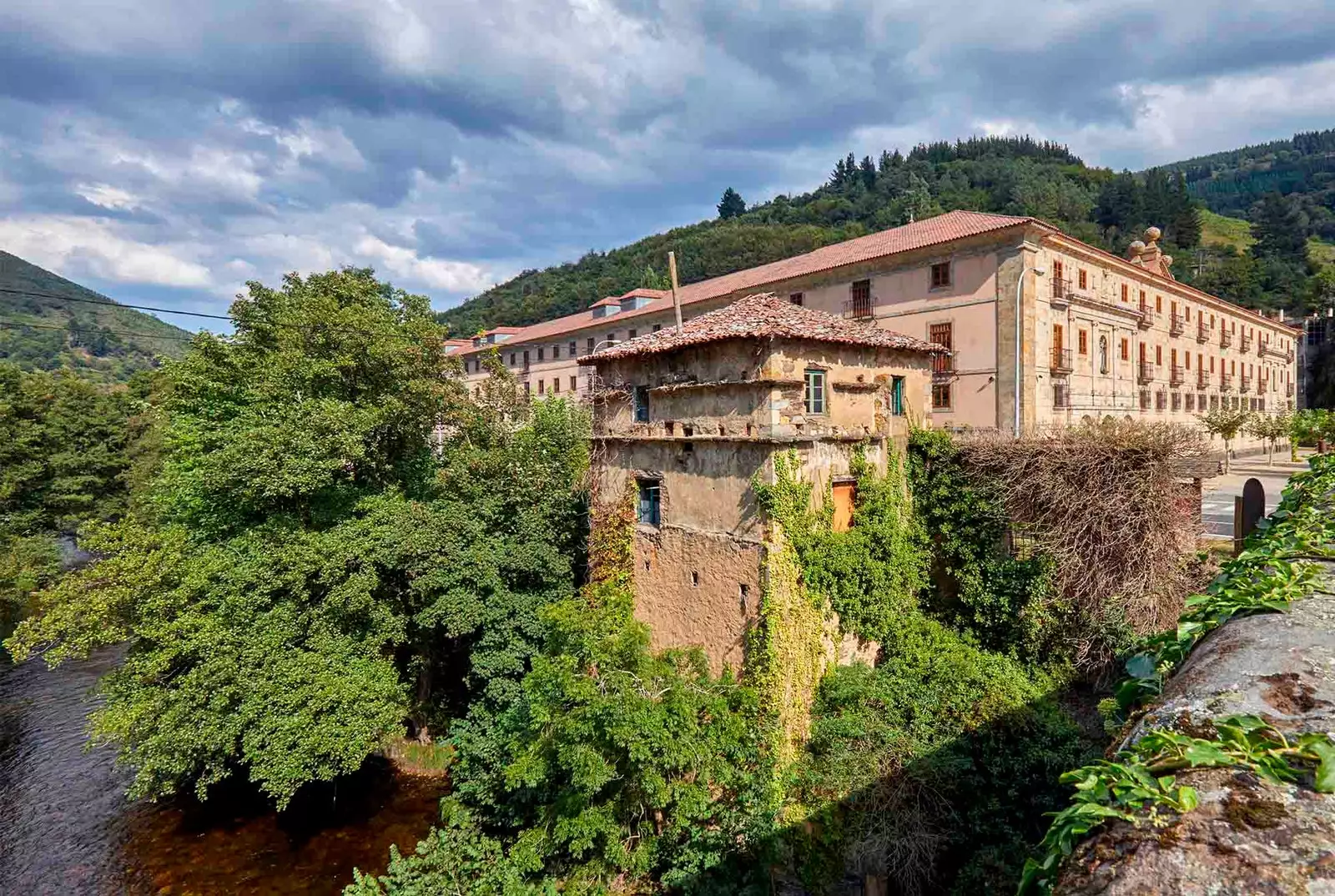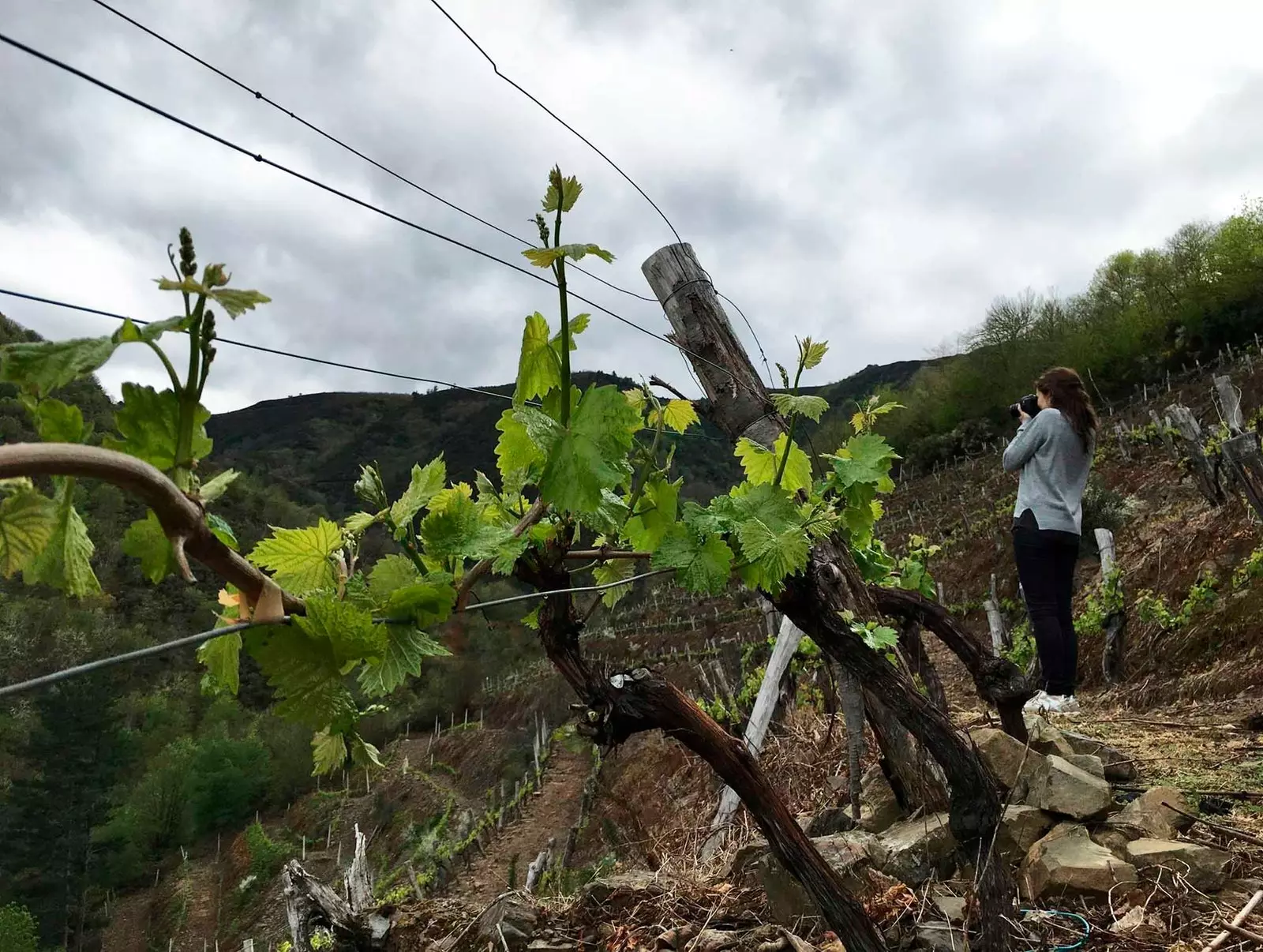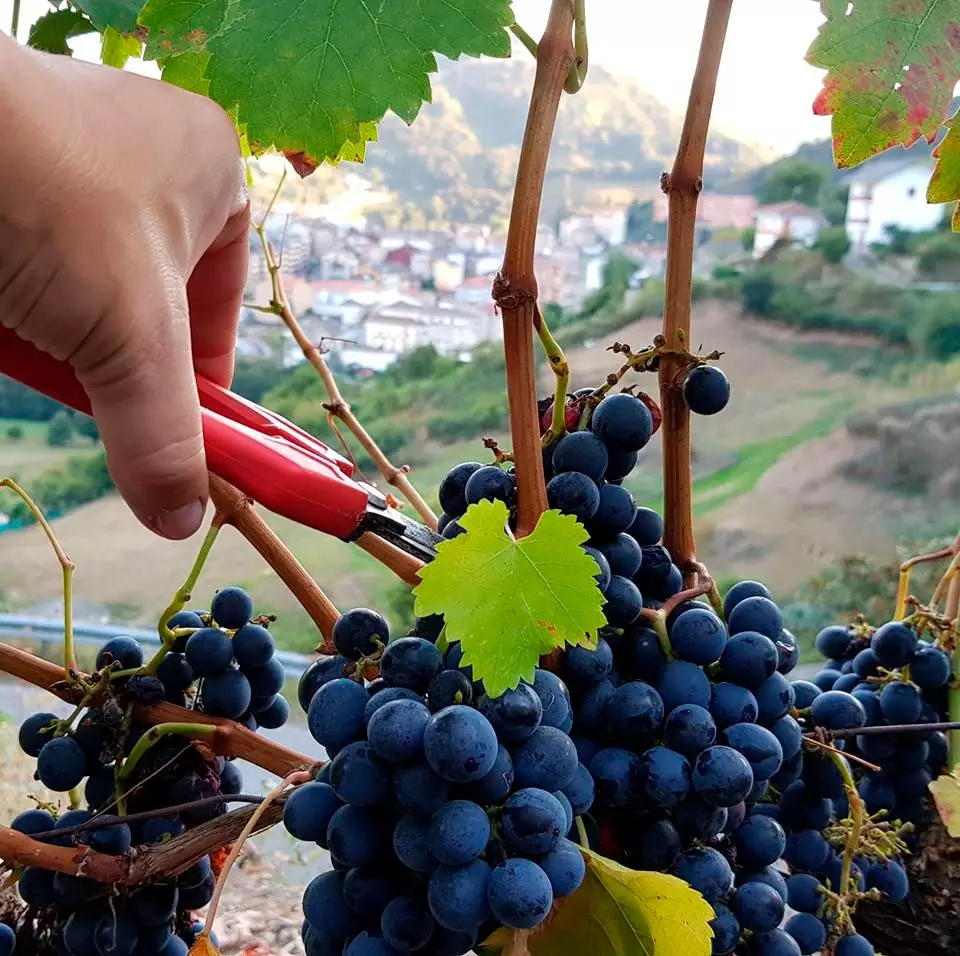
The Corias Monastery, where wine was first introduced to the area
Green, lots of green, is what characterizes southwestern Asturias, a mountainous land traditionally dedicated to agriculture and livestock, which is home to some of the most spectacular forests in the Principality , such as Muniellos . But this land also hides one of the best kept secrets of Asturias, its vineyards.
Wine in southwestern Asturias is experiencing a sweet moment. Its history dates back to Eleventh century , and after years in which it was on the brink of the abyss, with an almost anecdotal production, native grape varieties are currently being recovered and the quality of the wines produced there is better than ever.
Old vineyards, in some cases centuries old, coexist with vineyards that have been planted in the last decade. Visually, he he vineyards are spectacular because in many cases they are located on relatively high ground where the slope reaches a 30% drop. The views of the nearby valleys and mountains are unbeatable. Of course, to walk among the vines in some of the vineyards you have to have good balance and no vertigo.
There are not many who currently make a living from wine in the area, but this drink does have the same leading role on the southwestern table as it does the Cider in other areas of Asturias. To a large extent, they are winegrowers with a great attachment to the earth, who combined for years the care of the family vineyards with their professions, to whom we must thank that Cangas wine is still alive.

The cellars of the PDO Cangas are usually located on terraces
This wine region has a PDO, Cangas Wine , which covers several councils, including Cangas de Narcea, the largest in Asturias, as well as Allande, Grandas de Salime, Illano, Pesoz, Ibias, Degaña and part of Tineo. There are currently six wineries attached to the PDO: Antonio Alvarez-Chicote , Chacon Buelta , Corias Monastery , Lives , Vitheras , and the latest addition, Lordship of Ibias .
In addition, other wineries that go for free, such as Grouse Domain , are also reaping success with their wines. Likewise, in other councils such as Weightz , where is the delicious Ethnological Museum , there is currently no winery, but those who have wanted to maintain the family tradition and produce wine for self-consumption continue to care for their vineyards. And in nearby towns, like hairy , the vineyards can be easily seen from the main road.
It is believed that they were the Benedictine monks of the Monastery of San Juan Bautista de Corias (National Parador since 2013) who introduced wine to the area and there are documents that testify to the cultivation of vines there in the 11th century. And due to the orography of the terrain, so steep and mountainous, the automation of tasks is practically non-existent and harvests are still carried out by hand.
A good route to discover the heroic viticulture of the area is to start in Cangas de Narcea. A visit to white bar , which has many options on its wine list to try bottles from the area, is a good way to get to know the local production. The most traditional grapes in reds -and accepted by the PDO- are Black Albarín, Carrasquín, Black Verdejo and Mencía , while in white there are three, Albarín Blanco, Moscatel de Grano Menudo and Albillo.

In this area, harvests are still carried out by hand
Walking through Cangas, or even passing through the main road by car, you can see how the vineyards are perfectly integrated into the landscape, surrounded by forests and green meadows.
In Cangas you can visit the Wine Museum , a small museum located in the neighborhood of Santiso. The history of wine in Asturias is very well explained, from the traditions to the measures in which wine was measured in the past, or the different bowls in which it was drunk.
In addition, to enjoy the wine landscape, you can follow the Wine Walk , which begins at the foot of the museum. It is an accessible and flat route, which runs along the banks of the Luiña River and from where you can see different vineyards, some of them surrounded by purple wisteria, precious at this time.
In Cangas there are currently two wineries that offer regular visits to their vineyards and winery, as well as tastings at the end of the visit. the veteran Corias Monastery , who has daily visitors, and the young Cellar Lives , which also has availability for visits by reservation. And it is worth hearing first-hand the immense work that goes into each of their bottles, seeing the slate floors and observing how, in the old vineyards, the different grape varieties are mixed, without there being any specific order. Meanwhile, in the new vineyards they are planted in order according to the varieties, on many occasions, on terraces, which facilitates the care of the vineyard not only during the harvest, but also on a day-to-day basis.
On the other hand, in the council of Ibias is the winery Lordship of Ibias , a young winery -its first harvest is 2018- that hopes to be able to offer visits soon. In that area there are beautiful examples of village vineyards, further embellishing the traditional stone houses.
The outlook for Cangas wine is optimistic, in addition to the current wineries, there are several new projects that are taking shape and that will soon be a reality, so it is worth being attentive to the news .
